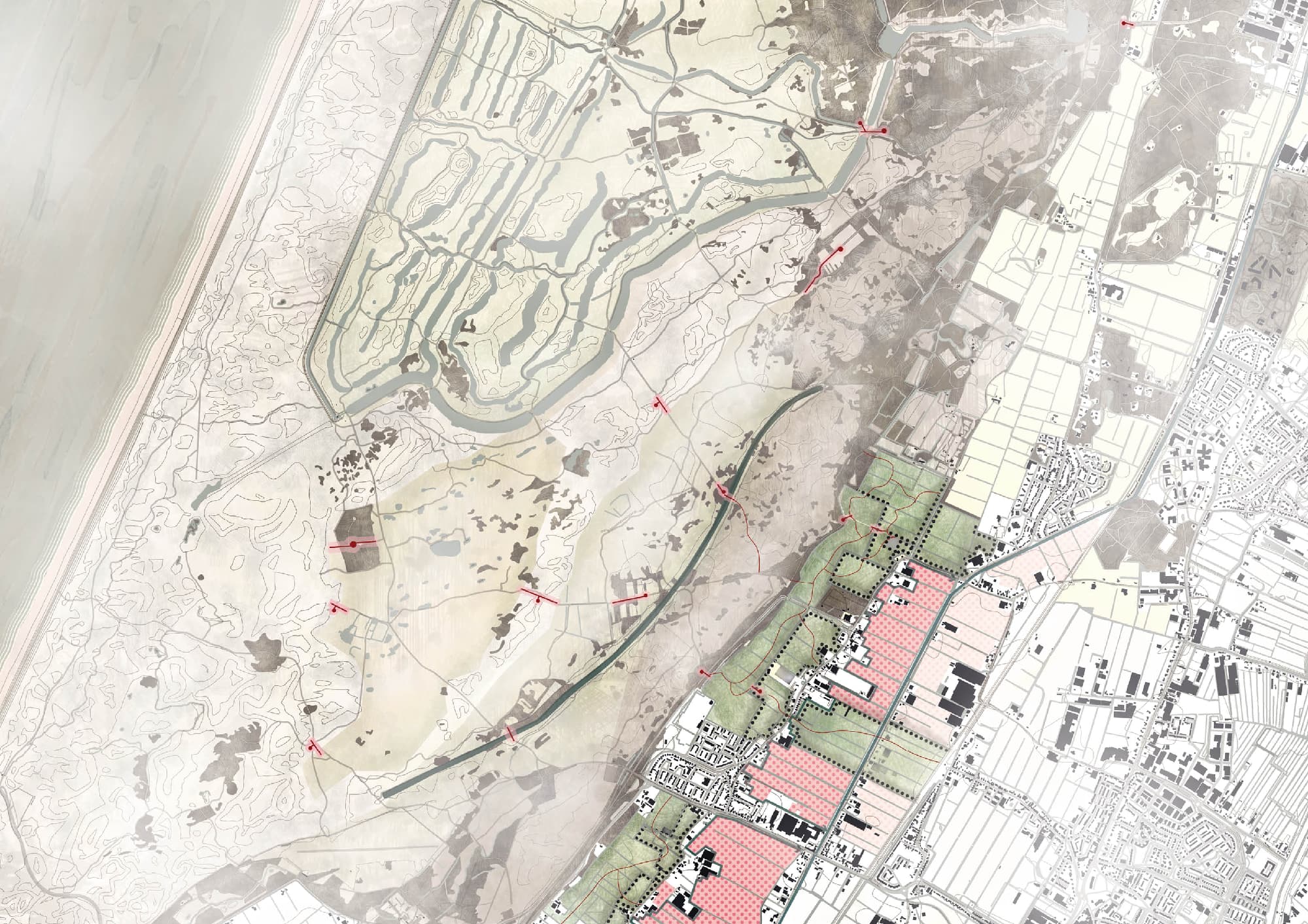Repetitively drawing to understand and reveal consequences of growth, change, decay and idealization within the design
Downloads
DOI:
https://doi.org/10.47982/spool.2022.3.04Keywords:
Movement, Hybrid, Landscape as being, Human, Non-human, Multispecies world, DrawingAbstract
This visual essay discusses drawing time in relation to the author’s graduation project, which is based on the paradigm of a multispecies world. Three design principles are derived from this paradigm: movement, hybrid and landscape as being. These relate to different notions of time and thus on drawing time. Movement means drawing the now. Hybrid is a material structure that shows non-human presence. This materiality implies that decay has to be drawn. The landscape as being is the ongoing landscape without end. In order to draw the three principles leading to the design intervention, fixed moments in time are chosen. In this visual essay 0 years, 20 years, and 30 years are shown. Time is drawn through a repetition of plans, sections and animation stills and through drawing specific human and non-human presence. In this way repetition, growth, decay and changing actors are shown. Drawing decay opened up new design possibilities. By comparing the repetitive animation stills, drawing time became a critical tool that showed idealization within the design. This visual essay shows both the repetition of drawings, as well as the discoveries it leads to.
How to Cite
Published
Issue
Section
References
Duempelmann, S. & Herrington, S. (2014). Plotting Time in Landscape Architecture. Studies in the History of Gardens & Designed Landscapes, 34(1), 371-375. http://dx.doi.org/10.1080/14601176.2013.850240
Hsiao, E. (2012). Whanganui River Agreement – indigenous Rights and Rights of Nature. Environmental Policy and Law, 42(6), 371-375.
Meyer, E. (2008). Sustaining beauty. The performance of appearance: A manifesto in three parts. Journal of Landscape Architecture, 3(1), 6-23. https://doi.org/10.1080/18626033.2008.9723392
Ministerie van Landbouw, Natuur en Voedselkwaliteit & Gezamenlijke provincies. (2020). Ambities en doelen van Rijk en provincies voor de Bossenstrategie.
Tsing, A. Lowenhaupt (2015). The Mushroom at the End of the World: On the possibility of life in capitalist ruins. Princeton University Press.
Tsing, A. Lowenhaupt, Deger, J., Keleman Saxena, A., Zhou, F. (2020). Feral Atlas: The More-Than-Human Anthropocene. Stanford University Press. http://doi.org/10.21627/2020fa.
Zhou, F. (2020). Invasion. [Map]. In A.L. Tsing, J. Deger, A. Keleman Saxena, F. Zhou (Eds.), Feral Atlas: The More-Than-Human Anthropocene. Stanford University Press. http://doi.org/10.21627/2020fa.
[Aerial Photo PDok 2019]. (n.d.). https://pdok.nl/viewer. Retrieved June 6, 2021.





